Potatoes are a crop that shouldn't be grown in the same spot as the previous year. You should actually rotate the locations on at least a three-year cycle to avoid some diseases and soil issues. This can be difficult for many gardeners with small gardens.
Potatoes grow deep and like to be planted in loose, well-amended soil. Preparing the planting bed can be hard work and keeping the soil evenly moist through the growing season requires a lot of water and attention.
Another concern arises at harvest. Using a spade or garden fork to dig up the potatoes invariably results in some sliced and speared tubers. It's hard to dig up all of the potatoes damage-free. I've tried many techniques and always injure some of my crop, regardless of how careful I am.
All of these issues can be dealt with by growing potatoes vertically, in a potato tower. A small space and big payout, easy rotation, easy maintenance, and easy harvesting make this an ideal method for growing potatoes.
The concept is simple: you start potatoes in an enclosed vertical planter and add soil and compost as the plant grows. Many potatoes will grow roots and ultimately new tubers wherever the main stalk is covered with soil. A seed potato planted in a garden bed will give you a handful of potatoes at harvest. If that same plant is covered with soil when it is about eight inches tall (20 cm), it will produce tubers at the original harvest depth and again at the new level. If covered with soil when it reaches eight inches again, it will produce another harvest level.
A tower three or four feet (1 to 1.3 meters) tall can multiple the quantity of potatoes that a single plant normally produces. A small planting footprint gives you a harvest comparable to a large planting bed. Just two pounds of seed potatoes can give you more than 20 pounds at harvest.
I begin making a potato tower with welded metal fencing four feet tall. A piece 12 feet long (3.6 meters) makes a tower about four feet wide when the ends are attached together. A potato tower four feet tall and four feet wide can hold many tubers. The wide tower is very stable and won't tip over like slender ones can.
Water to keep the soil moist and in a few weeks there will be potato plants growing within the tower. When the plants are about eight inches tall cover with soil, though I prefer a mix of straw and compost. The straw and compost will not weigh as much as soil and stays within the open-wire ring better. Also, it retains moisture very well and reduces the amount of watering the tower needs. If you choose to use a well-amended soil for each new level, you'll need to support the tower with rebar stakes and wrap it with fabric or plastic to keep the soil from spilling out.
The tower can be constructed with many other materials. Some gardeners use old tires. Plant the seed potatoes and cover the spot with an auto tire. When the plant reaches the top of the tire, fill it with soil and stack a new tire on top. Continue stacking until the tower is four or five tires high. At harvest just remove the tires to reveal the tubers.
You can also make a planting square with cinder blocks. You follow the same basic procedure of adding soil and stacking a new level of cinder blocks. At harvest, just one wall of the tower needs to be removed to access the crop. If you have carpentry skills you can built a wooden box with removable slats for your tower.
Growing potatoes in your garden, particularly in a tower, gives you great flexibility with which varieties of potato you choose. However not all potatoes will grow new tubers along the entire taproot. Some varieties like Russet will provide a bountiful harvest. Red Pontiac and fingerling potatoes do well. Others like Yukon Gold will not. I prefer Yukon Gold on my dinner table so even though I use the tower method I don't need to fill the tower more than a few feet tall because it won't increase the quantity at harvest.
Typically, indeterminate potatoes should do best in a tower. I haven't found a definitive authority or list identifying all of the varieties that will work so if you have a favorite potato try it in a tower and let me know your results.
A potato tower allows you to create a new planting bed without dedicating prime gardening real estate; you can save your raised beds and open rows for other crops. It gives you great flexibility in how many potatoes you grow and where you put them. After harvest the same tower can be used again the next year for a new crop, ideal garden recycling.
If you grow potatoes, consider a potato tower. You may never revert to the old system again.
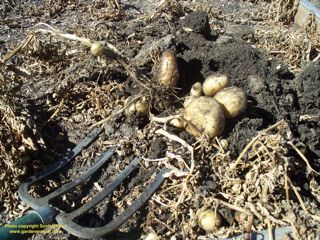
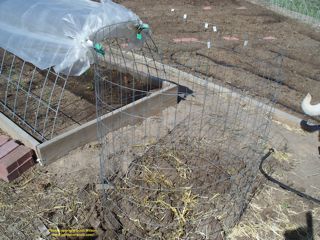
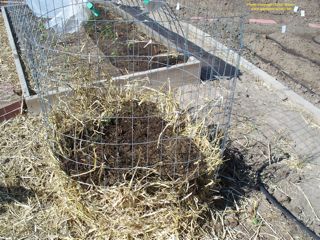
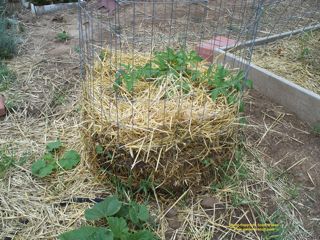
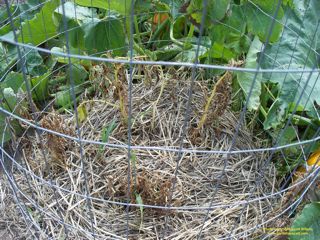
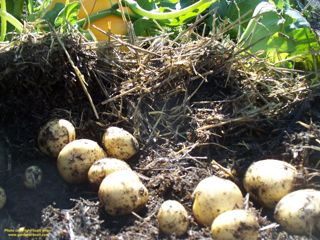
 RSS Feed
RSS Feed